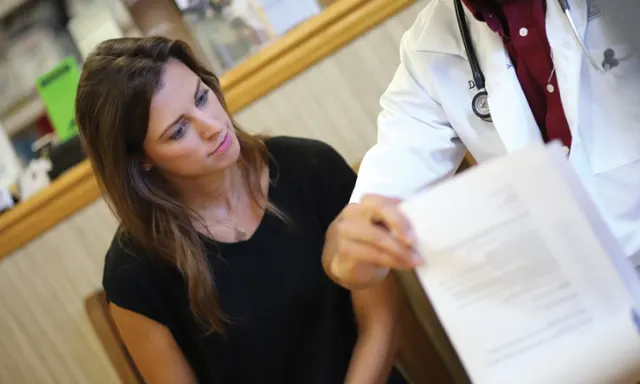How to Exceed—Not Merely Meet—Client Expectations
Lisa J. Hunter, MSW, Colorado State University
Jane R. Shaw, DVM, PhD, Colorado State University

I expect …
I expected more than this!
I guess I did not know what to expect.
How do you expect me to pay for this?
I did not expect that at all.
You did not meet my expectations.
Expectation is a loaded word. On the one hand, people are impressed and feel great satisfaction when their expectations are met or exceeded; on the other, the potential for failure and dissatisfaction looms large if expectations are not fulfilled. Expectations are defined as strong beliefs that something will happen or come to fruition; they are the beliefs outlining what someone will or should achieve.1
Expectations are based on the client’s assumptions, wishes, desires, and hopes, and in veterinary medicine, demand is growing for effective management of client expectations and concerns.2 Today’s clients are more invested, informed, and involved,3 and their expectations are increasingly high4 because of their deepening dedication to their companion animals. Meeting client expectations can lead to client satisfaction5 and retention,6 decreased complaints and malpractice concerns,7 and increased adherence to recommendations.8,9 To exceed client expectations, elicit the care they anticipate up-front, and manage and clarify their expectations throughout the visit.
Elicit Client Expectations
A critical starting point for meeting or exceeding client expectations is ascertaining the client’s needs, wants, and desires for the visit.10 Fully eliciting the client’s agenda at the beginning of the visit includes exploring his or her reasons for the visit and his or her full range of concerns, expectations, and treatment goals. Use open-ended questions to elicit expectations.
What brings you in today?
What other concerns do you have ?
What else is on your mind ?
What would you like to accomplish in today’s appointment?
What are your treatment goals for Mr. Fluff ?
How can I best help you and Mr. Fluff today?
The second step is introducing the veterinary professional’s agenda (ie, the items you would like to discuss in addition to those the client proposes) and asking the client’s permission.
In addition to Mr. Fluff’s annual physical examination and vaccinations, I would like to talk about his weight and dental health.
Can we add special considerations for senior cat care to our discussion topics today?
The third step is negotiating a mutual agenda using reflective listening and asking permission. This is an effective way to develop and manage realistic client expectations that includes educating clients on what is possible and what to expect every step of the visit, procedure, or process to create reasonable expectations of care.2
It sounds like you were hoping that we could do Mr. Fluff’s dental cleaning today.
Can we schedule a dental appointment in the coming week for Mr. Fluff to give him our undivided attention?
Support Client Expectations
Clients value a veterinarian‒client relationship that revolves around partnership11 and respect.4 Partnering with clients involves using inclusive language (eg, let us, we, together, ours, us) and emphasizing cooperation toward a mutual goal of care.
It is helpful to know your expectations so we can work together.
I would like to work to keep Mr. Fluff healthy and well.
Clients expect veterinary professionals to be attentive, compassionate, respectful, and empathetic.12 Expressing empathy allows for the interpretation and appreciation of the client’s perspective by placing oneself in the client’s shoes.
I hear that you are worried about leaving Mr. Fluff for the day.
You are concerned that Mr. Fluff will be stressed and scared in unfamiliar surroundings.
Clarify Client Expectations
Client complaints stem from poor veterinarian‒client communication and inadequate information provided by veterinary professionals.13 Using jargon can leave clients confused or feeling left out of the conversation. Clients expect information to be delivered in a frank, up-front manner using understandable terms.4 Easily understood language promotes client understanding by giving appropriate and comprehensive information that allows clients to form realistic expectations from accurate data. Signposts, or transitional phrases, help guide the conversation and give clients an early idea of where the appointment is heading.
Let us talk about what to expect on Mr. Fluff’s dental day.
Once Mr. Fluff is under anesthesia, I will conduct a full examination of his teeth and gums and take dental radiographs, as your dentist does for you. If I find anything concerning, I will call you before proceeding.
Exceed Client Expectations
Elicit client expectations.
Negotiate a mutual agenda.
Create a partnership.
Empathize with client concerns.
Provide simple explanations and avoid jargon.
Conclusion
Fully eliciting client expectations is the vital first step, followed by partnership and empathy, so clients feel they are respected and valued members of their pet’s care team. Lastly, simple explanations provide clients with a clear understanding of what to expect. (See Exceed Client Expectations.)
The authors of a 2014 study said it best: “Whenever client expectations are met or exceeded, the opportunity for best outcomes becomes possible, making identifying and fulfilling expectations an inherent goal of quality veterinary care.”14